Last updated on November 18th, 2022
The highest point in the world is Mount Everest in the Himalaya mountain range (with respect to height above sea level) and the lowest point is Mariana Trench in the western Pacific Ocean. Here we present the highest and the lowest points in each of the states of the United States.
1. Colorado
Highest Point: Mt Elbert at 14,440 feet
Mt Elbert is the highest peak in the Sawatch Range in the City of Leadville. It is named after Samuel Hitt Elbert, a governor in the late 1800s who opened the area to mining and railroad activity.
Lowest Point: Arikaree River at 3,317 feet above sea level
Arikaree River may be the lowest point in Colorado but it is still higher than the highest point in 18 states and the District of Columbia.
2. Wyoming
Highest Point: Gannett Peak in Fremont County with an elevation of 13,809 feet
Most people mistake the popular Grand Teton as the highest point in Wyoming but it is shorter by 34 feet compared to the remote Gannett Peak.
Lowest Point: Belle Fourche River in Crook County with an elevation of 3,101 feet
It means beautiful fork in French. This used to experience annual spring flooding that washed out the original park bridge. The Keyhole Reservoir was developed in the 1950s to provide flood control.
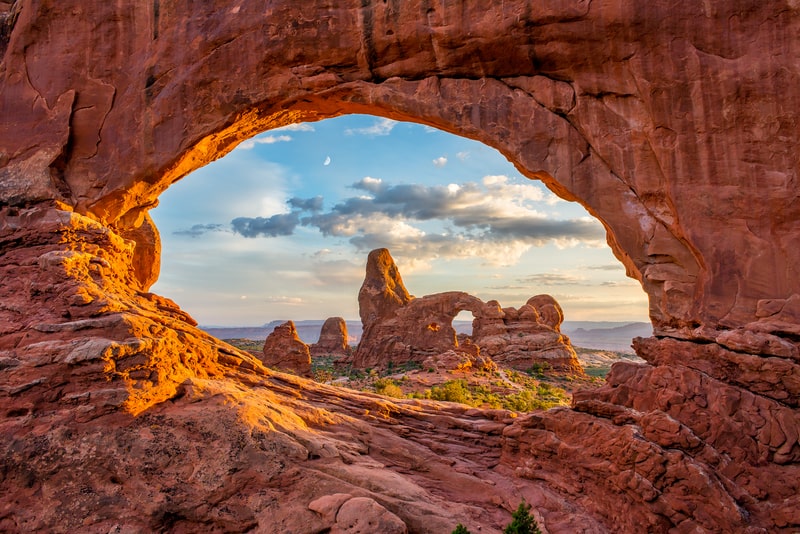
3. Utah
Highest Point: Kings Peak at 13,534 feet
The aptly named mountain stands proudly along the Highline Trail. It gives Utah residents incredible vistas but only after enduring a long hike with steep climbs.
Lowest Point: Beaver Dam Wash at 2,180 feet
This seasonal stream runs along the eastern Utah-Nevada border. It is a national conservation area that provides an ecological transition from the Mojave Desert to the Great Basin.
4. New Mexico
Highest Point: Wheeler Peak at 13,167 feet
It is located in the Sangre de Cristo or Blood of Christ Range, right at the southern end of the Rocky Mountains. It is named after a US army major who surveyed much of the state in the 1870s, George M. Wheeler.
Lowest Point: Red Bluff Reservoir at 2,844 feet
It was formed in 1936 after dam construction to provide irrigation in the area. It is a popular fishing destination with the dominant fish species being the white bass, the largemouth bass, and the hybrid striped bass.
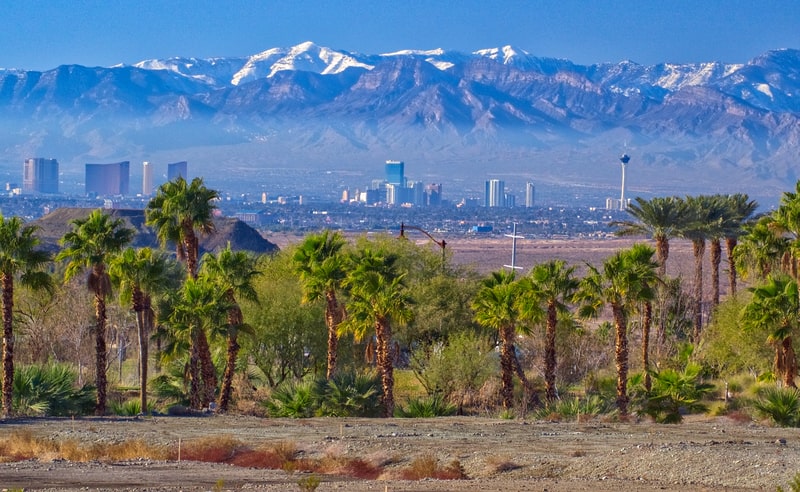
5. Nevada
Highest Point: Boundary Peak at 13,147 feet
This is part of twin summits with the other being Montgomery Peak. However, the latter is technically in California since the state line runs along the saddle between them.
Lowest Point: Colorado River at 481 feet
The low elevation creates low humidity and warm weather that attracts visitors all year round. It is also common to see foxes, bobcats, raccoons, burros, beavers, and big horn sheep.
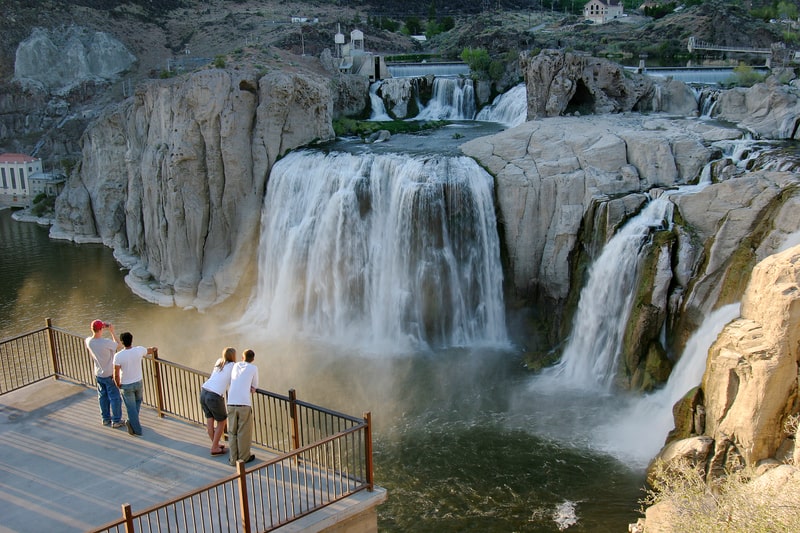
6. Idaho
Highest Point: Borah Peak at 12,662 feet
Idaho’s highest peak climbs more than 5,000 feet from the trail head to the summit in under 5 miles. This creates an intensely steep ascent that requires decent physical fitness.
Lowest Point: Snake River at 713 feet.
The 13th longest river in the US is an important source of irrigation for farmers. It actually starts in Wyoming and goes through Idaho before moving up to Oregon where it empties into the Pacific Ocean.
7. Arizona
Highest Point: Humphreys Peak at 12,637 feet
There is a misconception that Arizona is a flat desert but this mountain proves that the state has a more interesting terrain. The summit is packed with snow in the winter and must be climbed with a permit.
Lowest Point: Colorado River at 72 feet
The river stretches 500 miles across Arizona, most notably through the Grand Canyon. There are four state parks right on the river for sightseeing and adventure activities.
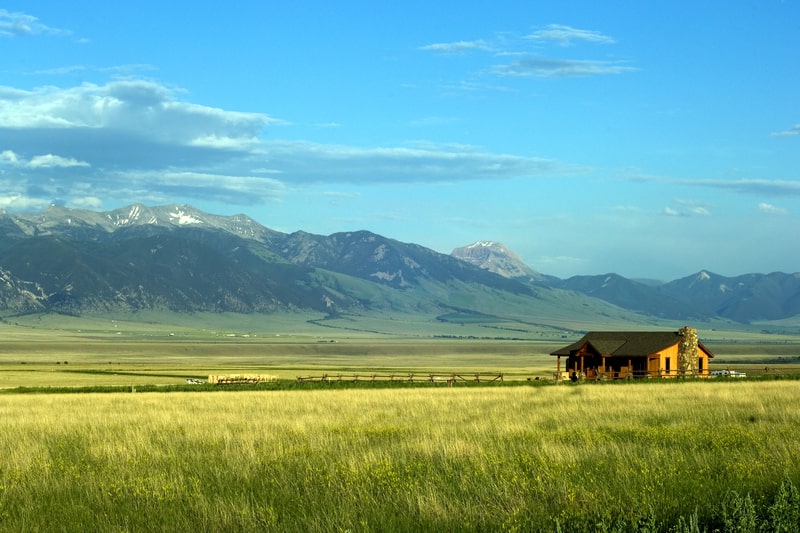
8. Montana
Highest Point: Granite Peak at 12,807 feet
The so-called “roof of Montana” is the tallest in the Absaroka Beartooth Wilderness. It was first climbed on August 23, 1923 after several unsuccessful expeditions spanning three decades.
Lowest Point: Kootenai River at 1,804 feet
The fast-moving body of water is regulated by the Libby Dam. In 1997, the state’s biggest rainbow trout was caught near the dam with 38 inches in length and 33 pounds in weight.
9. Oregon
Highest Point: Mount Hood at 11,249 feet
It is a dormant volcano with only three eruptions in the past 1,800 years. Over 10,000 climbers flock to the majestic mountain each year.
Lowest Point: Pacific Ocean at sea level
At the western side of Oregon is a long coast that meets the ocean. Anyone can enjoy the views by driving along the Pacific Coast Scenic Byway along Highway 101.
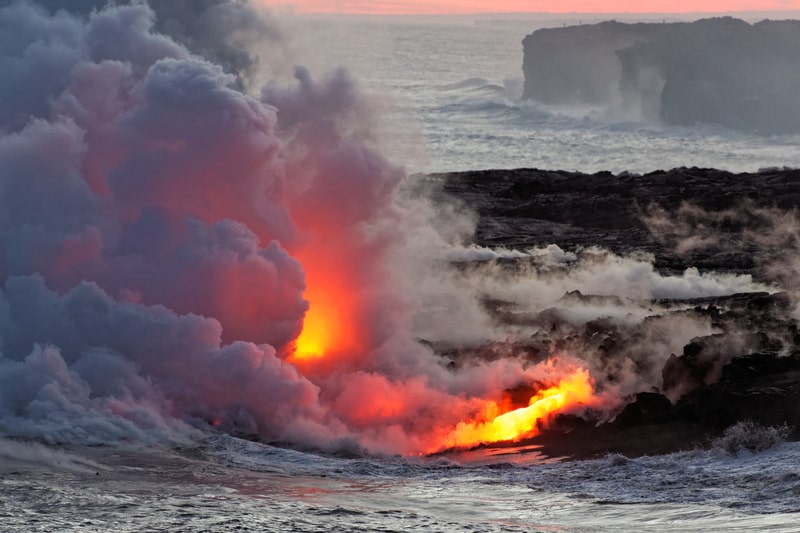
10. Hawaii
Highest Point: Pu’u Wekiu at 13,796 feet
This is the highest point on the summit of Mauna Kea, a dormant volcano in Hawaii. It would have been the tallest mountain in the world at 33,000 feet if the height was measured from its base on the sea floor.
Lowest Point: Pacific Ocean at sea level
Hawaii’s popular beaches are in danger due to rising sea levels and increased acidification. It is the first US state to adopt a law that aligns with the Paris Agreement on climate change.
11. California
Highest Point: Mount Whitney at 14,505 feet above sea level
This mountain boasts of having the tallest peak in the lower 48 states. It attracts adventurers from all over the country, making it the most frequently climbed mountain in Sierra Nevada.
Lowest Point: Death Valley at 282 feet below sea level
Since 1987, the Badwater Ultramarathon lets hardened athletes run across 135 miles of the Death Valley. Temperatures can reach 130 degrees Fahrenheit. The race finishes at the trailhead to Mount Whitney.

12. Nebraska
Highest Point: Panorama Point at 5,424 feet
This sits in the middle of an almost featureless private field near the border of Nebraska, Colorado, and Wyoming. It has a marker with a large metal desk that contains a register book for visitors.
Lowest Point: Missouri River at 840 feet
In 1857, the town of Niobrara was established along the river. In 1881, successive floods made the area unlivable so residents moved the entire town over a mile away, building by building, using mules and horses.
13. South Dakota
Highest Point: Harney Peak at 7,244 feet
It was renamed Black Elk Peak in 2016 by the US Geological Service because of the controversy surrounding the previous naming scheme. William Harney was a US army general who massacred Native Americans in 1855.
Lowest Point: Big Stone Lake at 968 feet
This is located on the eastern side of South Dakota, on the border with Minnesota. Its name comes from the large amounts of boulders and stones throughout the bottom of the 27-mile lake.
14. Kansas
Highest Point: Mount Sunflower at 4,041 feet
It is barely recognizable with only a small rise in the middle of a family ranch. The owners installed a metal sculpture, a US flag, and covered picnic area to increase its prominence.
Lowest Point: Verdigris River at 679 feet
Its name comes from the French words for green and grey, possibly due to copper ore in the area. In the 1800s, numerous trading posts were built along its 280-mile course.
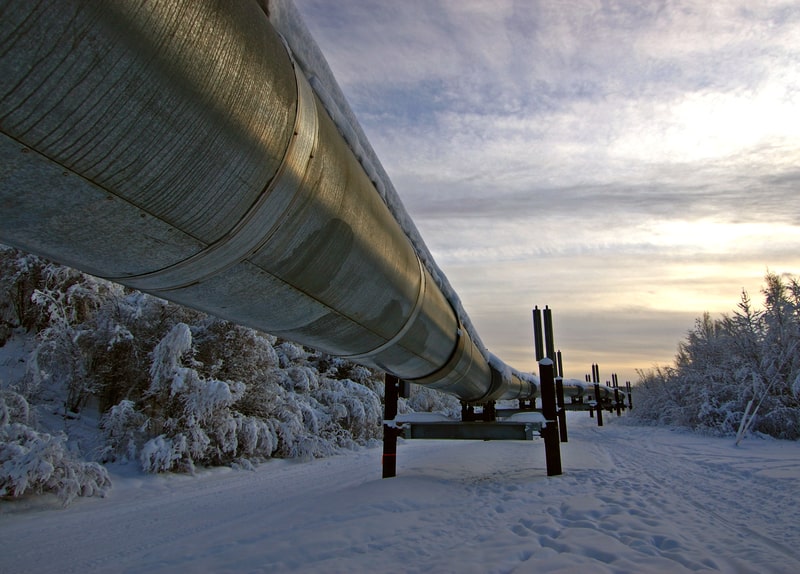
15. Alaska
Highest Point: Mount McKinley at 20,310 feet
This mountain is also the highest in all of North America. In 2015, it was changed to Denali under President Barack Obama in deference to the peak’s traditional name by the natives.
Lowest Point: Pacific Ocean at sea level. Southern Alaska faces the Pacific Ocean. Several towns along the coast depend on the waters for fishing, recreation, travel, and tourism.
16. North Dakota
Highest Point: White Butte at 3,508 feet
The landscape was carved from hundreds of thousands of years of erosion with flat-lying sandstone and other materials. It is a popular climb but visitors should be wary of rattlesnakes in the summer.
Lowest Point: Red River of the North at 751 feet
This is the boundary between North Dakota and Minnesota. This slow-moving river is 550 miles long and swells in the spring after heavy rains, resulting in catastrophic floods.
17. Washington
Highest Point: Mount Rainier at 14,411 feet
While it has not erupted in the last 500 years, this is still considered as the most dangerous volcano is the Cascade Range. Its great height and extensive glacier mantle could trigger enormous mudflows to the surrounding valleys.
Lowest Point: Pacific Ocean at sea level
The Pacific Coast of Washington offers wild and open spaces for travelers. Visitors can drive along the highway to explore the beaches, oyster farms, fishing villages, and primeval forests.
18. Texas
Highest Point: Guadalupe Peak at 8,751 feet
This is a remnant of an ancient sea that once covered the area. Among the animals that once lived here were mammoths, rhinoceros, and saber-toothed tigers.
Lowest Point: Gulf of Mexico at sea level
The Texas Gulf Coast features 600 miles of coastline with seaside towns and amazing views. Visitors can go to zoos, museums, beaches, ranches, and botanical gardens. They can also witness wildlife in their natural habitats.
19. West Virginia
Highest Point: Spruce Knob at 4,863 feet
It is the 13th most isolated peak with about 175 miles of isolation. It can be found in the Monongahela National Forest. The summit has a public observation tower which is accessible via forest roads and a short walk.
Lowest Point: Potomac River at 240 feet
Famous for being the home of George Washington. In 1998, President Clinton designated it as an American Heritage River to allow the communities to access federal funding in an effort to revitalize the waters.
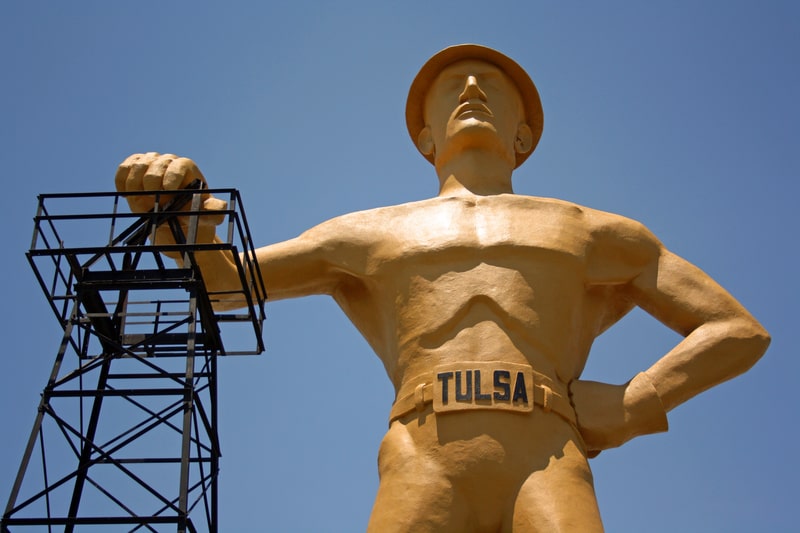
20. Oklahoma
Highest Point: Black Mesa at 4,975 feet
The name comes from the black lava rock that coated the area from 30 million years ago. It has been declared as a nature preserve which visitors can hike to see rare plants and animal species.
Lowest Point: Little River at 289 feet
This has been declared as a national wildlife refuge in Oklahoma. The goal is to preserve the hardwood forests for the migratory birds. It is filled with bottomland species of trees such as willow oak, white oak, cypress, and holly.
21. Minnesota
Highest Point: Eagle Mountain at 2,301 feet.
Despite its modest height, it can clearly be seen from afar thanks to 1,321 feet of prominence and 437 miles of isolation. Hiking to the top is straightforward although access is difficult during winter.
Lowest Point: Lake Superior at 601 feet.
Located 15 miles from Eagle Mountain, this is counted among the five Great lakes of North America. It is also one of the world’s largest sources of fresh water.
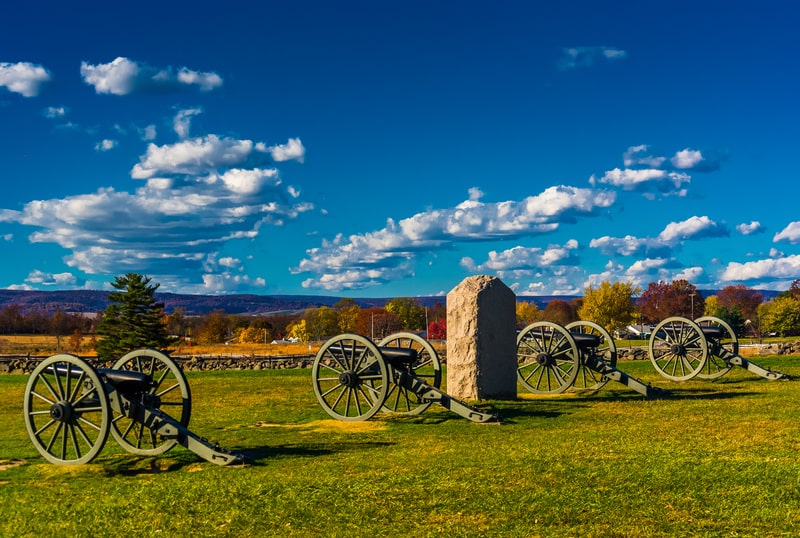
22. Pennsylvania
Highest Point: Mount Davis at 3,213 feet.
The summit does not have much prominence or isolation so it is hard to see, but it is highly accessible with roads near the top. A tall observation tower offers 360-degree views.
Lowest Point: Delaware River at sea level.
This 330-mile body of water flows through five states including Pennsylvania, Delaware, Maryland, New Jersey, and New York. It is home to more 400 bird species and 90 fish species.
23. Iowa
Highest Point: Hawkeye Point at 1,671 feet.
This is a farmland summit that offers panoramic views of the flat Iowa landscape. It sits on private land but the owners welcome tourists and keeps it accessible to all.
Lowest Point: Mississippi River at 480 feet.
This is the longest river in all of North America with a discharge volume ranked eighth in the world. In 1993, persistent rains caused one of the worst floods in Iowa’s recorded history.
24. Wisconsin
Highest Point: Timms Hill at 1,951 feet.
It features two lookout towers at the summit for excellent views. One is a 15m wooden tower with stairs for ease of climbing. The other is an old 22m steel radio tower with an exposed ladder.
Lowest Point: Lake Michigan at 579 feet.
This the third largest of the Great Lakes and fifth in the world in terms of surface area. The lake has a moderate climate that makes it suitable for agriculture and recreation.

25. New Hampshire
Highest Point: Mount Washington at 6,288 feet.
On clear days, it is possible to see 130 miles out from the summit for views of Vermont, Maine, Quebec, Massachusetts, and the Atlantic Ocean. There is an observatory and museum at the top.
Lowest Point: Atlantic Ocean at sea level.
New Hampshire‘s Seacoast Region has 18 miles of shoreline that touches the Atlantic Ocean. It features the family-friendly Hampton Beach and the historic city of Portsmouth.
26. New York
Highest Point: Mount Marcy at 5,343 feet.
This is the highest mountain in the Adirondacks with the summit being home to fragile alpine vegetation. The hike is relatively short but steep so visitors should prepare for a long day out.
Lowest Point: Atlantic Ocean at sea level.
New York‘s coastline stretches 520 miles which makes it longer than the combined length of the coasts of Miami, Boston, San Francisco, and Los Angeles.
27. Vermont
Highest Point: Mount Mansfield at 4,395 feet.
Its name comes from the observation that its east summit ridge looks like the profile of a human face. Indeed, locals have tagged various features as Nose, Forehead, Chin, and even Adam’s Apple.
Lowest Point: Lake Champlain at 95 feet.
This body of water is 120 miles long and 12 miles wide with 587 miles of shoreline. It has the oldest known fossil reef in the world at 480 million years old.
28. Virginia
Highest Point: Mount Rogers at 5,729 feet.
There are no roads leading to the summit so visitors have to hike up. The shortest route is through Massie Gap from the south which is an eight mile round trip. It is common to see wild ponies along the trail.
Lowest Point: Atlantic Ocean at sea level.
Virginia has about 2,000 miles of roads along the Atlantic Ocean for a scenic trip. The state’s eastern shore is isolated with small towns seemingly frozen in time.
29. Tennessee
Highest Point: Clingmans Dome at 6,643 feet.
This is the peak of the Great Smoky Mountains National Park. A road goes up near the summit with visitors only needing to walk half a mile to the top. There is a 54-foot observation tower for better views.
Lowest Point: Mississippi River at 178 feet.
The area around the river produces 92% of US agricultural exports. About 175 million tons of freight move across the river each year thanks to an intricate system of locks and dams.

30. Michigan
Highest Point: Mount Arvon at 1,979 feet.
In the past, Mount Curwood was considered as the state’s highest point. However, a USGS survey in 1982 showed that Mount Arvon is taller by 11 inches. That was enough to move the crown.
Lowest Point: Lake Erie at 571 feet.
The lake provides drinking water for about 11 million inhabitants around the watershed. It is the most populated of the Great Lake basins, making it stressed from the rapid urbanization and industrialization.
31. Ohio
Highest Point: Campbell Hill at 1,549 ft (472 m)
The highest peak in Ohio is Campbell Hill in the town of Bellfontaine, at around 1,500 feet. This area receives a bit more snow that the surrounding plains of Ohio.
Lowest Point: Ohio River at Indiana border at 455 ft (139 m)
The lowest point in Ohio is at 455 feet, along the Ohio river where the state borders Indiana.
32. Missouri
Highest Point: Taum Sauk Mountain at 1,772 ft (540 m)
The highest peak of the St. François Mountains is Taum Sauk Mountain, in Missouri. The St. François Mountains belong to Missouri’s portion of the Ozarks.
Lowest Point: St. Francis River at Arkansas border at 230 ft (70 m)
The lowest point in Missouri is at 234 feet and is located along the St. Francis River in the Southeastern part of the state.

33. Kentucky
Highest Point: Black Mountain at 4,145 ft (1263 m)
In Kentucky, the highest peak is Black Mountain, at just over 4,100 feet. It is located near the Virginia border near Lynch, Kentucky and Appalachia, Virginia.
Lowest Point: Mississippi River at Kentucky Bend at 257 ft (78 m)
The lowest point in Kentucky is at 257 feet where the Mississippi River runs through it, along Kentucky Bend at 257 feet below sea level.
34. North Carolina
Highest Point: Mount Mitchell at 6,684 ft (2037 m)
Three of the four highest peaks are found in North Carolina, including the highest peak in the Blue Ridge Mountains, Mount Mitchell.
Lowest Point: Atlantic Ocean at Sea level
The lowest point in North Carolina is at sea level, along the coast of the Atlantic Ocean. Several miles of coastline along the Easternmost part of the state offer great fishing, sailing, and other forms of recreation on the beach.
35. Indiana
Highest Point: Hoosier Hill at 1,257 ft (383 m)
The highest peak in Indiana is Hoosier Hill at over 1,200 feet as well. It is located on a farm about a mile from the Ohio border.
Lowest Point: Confluence of Ohio River and Wabash River at 320 ft (97 m)
The lowest point in Indiana is at 332 feet, along the Ohio River where Illinois, Indiana, and Kentucky meet.

. . . continue reading on the next page
